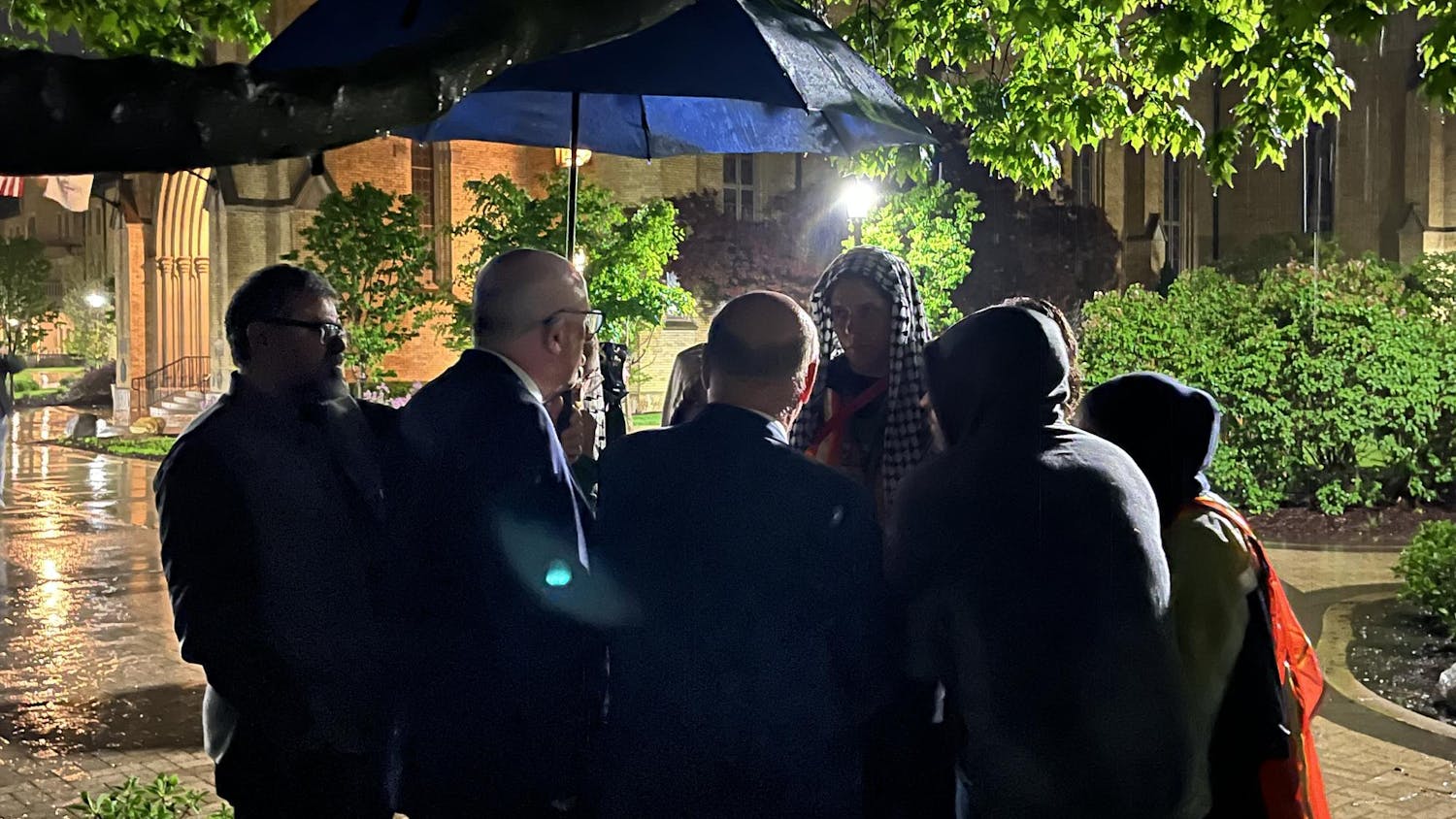I’m indulging myself to spend an entire column dedicated to exploring the works of Kazuo Ishiguro — the author who is the focus of my thesis. Born in Nagasaki, Japan in 1954, he later moved to England in 1960. These distinct geographic experiences have integrated themselves into his novels, as he incorporates the landscapes of Japan and Britain in his works. Ishiguro was awarded the Nobel Prize in Literature 2017, cited as “who, in novels of great emotional force, has uncovered the abyss beneath our illusory sense of connection with the world.”
One of the most intriguing things about Ishiguro’s novels is that he explores a myriad of genres. While there are arguably similar themes across all the novels, the narrative form is quite distinctive between all the books. His books consist of science fiction, speculative fiction, fantasy, historical fiction, literary fiction and even more sub-genres. As I read through his oeuvre this summer in preparation for writing my thesis, I found myself surprised by the vastly different genres he presents his work.
Several of my friends asked which order they should approach his fiction, but I found that it’s up to the individual’s genre preferences. Some of his works are more fast-paced and are rooted in the dystopian world (e.g. “Klara and the Sun”). However, some are more drawn-out narratives focused on an individual’s characterization (e.g. “The Remains of the Day”). As such, I found myself creating a mental list of comparative titles every time I read one of his books which is the foundation of this column.
“A Pale View of Hills” (1982)
If you liked: “The Ocean at the End of the Lane” by Neil GaimanThis is Ishiguro’s debut novel and my personal favorite. It follows the story of Etsuko reflecting on her life as a woman who left Japan to live in England with her family. Etsuko grapples with the loss of her eldest daughter, Keiko, to suicide, and the story explores feelings of guilt and culpability through unreliable narration, character projection and the motif of memory.
Its world-building reminded me of Gaiman’s “The Ocean at the End of the Lane,” which follows a man who returns to his hometown for a funeral. The narrative reminiscence of the past from a renewed perspective struck me as being analogous between the two novels, and much of the magical realism in Gaiman’s work can be found in Ishiguro’s fiction.
“An Artist of the Floating World” (1986)
If you liked: “Amsterdam” by Ian McEwan“An Artist of the Floating World” follows the protagonist Masuji Ono as he reflects on the past — particularly after the decline of his prestige and his notoriety post-second world war Japan. Despite the war context, it is a quiet novel — one that reveals certain truths in reflective comments.
Much of Ishiguro’s work reminds me of Ian McEwan’s writing, which is not a novel observation as both are graduates of the University of East Anglia’s creative writing course. The role of the artist in “Amsterdam,” as well as the political pull that figures of authority have reminded me of some of the questions of morality that emerge in “An Artist of the Floating World.” If you enjoy McEwan’s work of British fiction, then perhaps Ishiguro is a natural progression.
“The Remains of the Day” (1989)
If you liked: “Howards End” by E.M Forster.Arguably Ishiguro’s most famous and revered novel, “The Remains of the Day” is what made me want to write my thesis on Ishiguro and write a column for The Observer. It won The Booker Prize in 1989 and features the first-person narrative of Stephens — a butler who dedicates his life to the services of the fictitious Darlington Hall in England.
On the surface, it is the quintessential British novel. However, many literary critics have noted the subversion of the literary scene in which it emerges itself. Author Salman Rushdie said that the novel “is a brilliant subversion of the fictional modes from which it seems at first to descend.” The relationship between master and servant “and the codes by which both live, are no longer dependable absolutes but rather sources of ruinous self-deceptions.”
The question of human dignity and its relationship to our occupations or roles in society is ever-present as a graduating senior who is looking to work full-time post-graduation. How do we live an authentic life? How does one avoid bad faith? These existentialist questions were the seeds that later turned into my thesis proposal.
In addition, the arguable use of a house or estate as a metonymy for English social code or nationalism reminded me of similar devices present in “Howards End,” whose title is the name of the estate that surrounds the plot of the work of fiction.
“The Unconsoled” (1995), “When We Were Orphans” (2000) or “The Buried Giant” (2015)
If you liked: “The Curious Incident of the Dog in the Night-Time” by Mark Haddon or Julio Cortazar’s fictionFor the sake of brevity, I am lumping these three novels into a single recommendation although their surface-level attributes are vastly different. However, they all create a surreal nature that makes them comparable. “When We Were Orphans” is a detective story that reminded me of the mystery in Mark Haddon’s novel, as well as their narrators’ similarities (both named Christopher and seem to lack awareness of their respective situations). “The Buried Giant” is rooted in Arthurian legend, and the mystical mist that descends itself upon its characters cheats the civilization of their memories. This plot lends itself to the consideration of the past, and its transcendent quality seems to permeate the readers themselves.
In addition, the speculative/fantastical worlds created in “The Unconsoled” and “The Buried Giant” reminded me of some of the world-building that Julio Cortazar’s fiction brings to life. These Ishiguro novels are not for the faint of heart; they are more head-scratchers than some of his other novels. Their geographic contexts are a blend between real and fiction, and the narrators seem to oscillate between achieving revelation and succumbing to the ineffable.
“Never Let Me Go” (2005) and “Klara and the Sun” (2021)
If you liked: “Station Eleven” by Hilary Mantel or “The Prime of Miss Jean Brodie” by Muriel SparkAgain, for the sake of brevity, I will discuss these two novels in combination as they are Ishiguro’s more dystopian fiction. If you are actively engaged in debates surrounding AI, ChatGPT and technological innovation, either of these books would certainly be of interest. “Klara and the Sun” is a fast-paced novel that follows the experiences of an “Artificial Friend” (Klara) and her integration into a household. “Never Let Me Go” is similarly dystopian, although a slower-paced read that takes place at Hailsham, a boarding school in England whose students are taught little to nothing about their surroundings outside of the school. The progressive unveiling of their reason for existence is both horrifying and heartbreaking.
The dystopian nature of these novels will intrigue fans of “Station Eleven” and other similar genre-specific texts. However, both novels feature interesting dimensions of pedagogy and how children should approach education. In addition, the books arguably demonstrate the inequities of power when it comes to students, which reminded me of similar themes in Muriel Spark’s “The Prime of Miss Jean Brodie.”
Final Thoughts
My brief synopses of these novels are my reflections or are in dialogue with literary critics of Ishiguro’s work and may not be the same conclusions that another individual draws towards these respective works. Ishiguro has further speeches, essays and short stories, but the works mentioned previously are the bulk of his oeuvre. Before this summer, I had never attempted to read all an author’s works. When people asked about my favorite novel, I simply recited the name of an author whose singular book I enjoyed. However, by reading all of Ishiguro’s works, I gained more of an understanding of his central threads of thought and personally witnessed the progression of his writing.In Ishiguro’s Nobel Lecture, he states that “in the end, stories are about one person saying to another, ‘This is the way it feels to me. Can you understand what I’m saying? Does it also feel this way to you?’” This feeling of emotion permeates his literature, regardless of whether the protagonist is an elderly couple in an elusive post-Arthurian England or a detective who returns to Shanghai during the Sino-Japanese War. These different settings, genres and plots merely unveil common questions that prevail over us all. Ishiguro himself says “I tend to write the same book over and over.” This repetition makes me stop and wonder “What is he trying to say?” And perhaps, more collectively, “Why should we listen?”
Elizabeth Prater is a senior at Notre Dame double majoring in marketing and the Program of Liberal Studies. She is interested in the cultural implications of analyzing classics and literature under a contemporary lens. When she isn't writing, she loves playing the violin, hiking in the Pacific Northwest and offering unsolicited book recommendations. Elizabeth always appreciates hearing from readers, so feel free to reach out to eprater@nd.edu or @elizabethlianap on Twitter.













